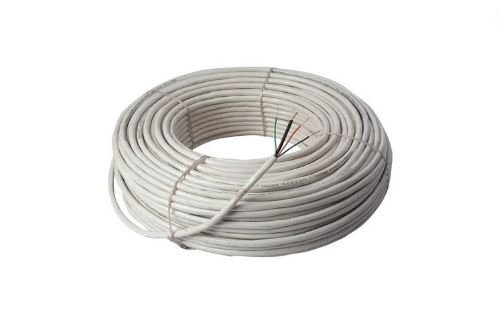In this guide, we will give you a detailed discussion on the comparison between wire rope and cable. From here you will be able to tell their meaning, differences, and similarities.
What is a Wire Rope?
Wire rope is, as its name implies, a cable made from strands of metal wires that are twisted or braided into a helix. These individual wires are then bound together to form a strong and flexible core. As such wire ropes are often used as overhead supports for heavy loads needing strength and flexibility.

What is Cable?
Cable is a general term that covers various types of structures used in different industries and fields for conveying energy, signals, or other loads. In general, it refers to any type of structure used by other fields and industries to transfer energy or signals that can be attached to various kinds of hooks on the surface.

Differences Between Cable and Wire Rope
Construction
Wire Rope: More precisely, it is a kind of cable made out of plural numbers of metal wires twisted or braided together. Its construction offers both strength and flexibility.
Cable: It is a more general term that can be applied to other types of buildings. These might be electrical cables (conductors and insulation), coaxial cables, or structural cables used in bridges.
Materials
Wire Rope: Wire rope is generally constituted of steel, stainless steel, or other alloys. Different materials are used for different applications depending on requirements, including strength, resistance against corrosion, and flexibility.
Cable: The materials used for the cable depend upon its specific purpose. Take, for instance, electrical cabling. Electrical cables have to contain copper or aluminum conductors and structural cables used in bridges are generally made of high-strength steel too.
Applications
Wire Rope: Mainly for applications where strength, flexibility, and durability are essential. Other common applications are lifting, hoisting, towing, and support in industry, construction, or shipbuilding.
Cable: Cable refers to a broader term that may also be used for various applications. This can be split up into power line cables, data transmission lines, and structural cables used in architecture or engineering.
Usage in Engineering and Construction
Wire Rope: Typically used for heavy duty mechanical applications, like cranes and elevators or suspension bridges.
Cable: Such cables can be electrical or communications, and structures that depend on them for support include the walls of a building.
Flexibility
Wire Rope: A product specially engineered for a balance of strength and flexibility (i.e., Where bending or flexing is necessary without loss in tensile strength).
Cable: Flexibility and strength neither the design nor purpose of a cable is fixed. For example, electrical cables might need to emphasize flexibility whereas structural cables must focus on strength.
Similarities Between Wire Robe and Cable
Composition of Multiple Elements
Similarly, wire ropes are constructed out of segments. These are metal wires twisted together to make wire rope. In the case of cables, these are conductors or fibers.
Strength and Load-Bearing Capacity
Wire ropes, some types of cable were created to move loads or give strength. The heavy-duty mechanical wire rope is used for loads similar to structural cable in bridges.
Versatility in Applications
Wire ropes and cables can be used in virtually any kind of industry or situation. Both have uses in construction, transport, and shipbuilding.
Flexibility
Besides wire ropes, many types of cables are also very elastic. Moreover, wire ropes are supposed to be extremely pliant but also have a significant degree of resilience. That’s why they can serve as benders.
Various Materials
Different materials used in the manufacture of wire rope and cable cater to different requirements for each specific application. Steel, stainless steel, and other alloys are most common.
Engineering and Construction
The wire ropes and some cables are used in engineering construction. Wire ropes are used for cranes, elevators, and mining operations; cables may be incorporated into such structural members as suspension bridges.
Maintenance Considerations
Some cables and wire ropes must be checked routinely to see whether they are still in good working condition. This is even more true if these elements are exposed to high loading or the environment, which can cause wear and corrosion.
Conclusion
Generally speaking, of course, all wire ropes are cables– but not all cables are wire ropes. Usually, the difference lies in how they are used, their sizes, and what materials they are made from.
Cables are a general term that references many cables employing a variety of structures to communicate energy, signals, or support structures. Wire ropes on the other hand refer to specialized heavy duty mechanical-type cable products designed for particular applications.
More Resources:
Cable – Source: BRITANNICA
Steel Wire Rope – Source: GUOFENG
Wire Rope – Source: IQS DIRECTORY